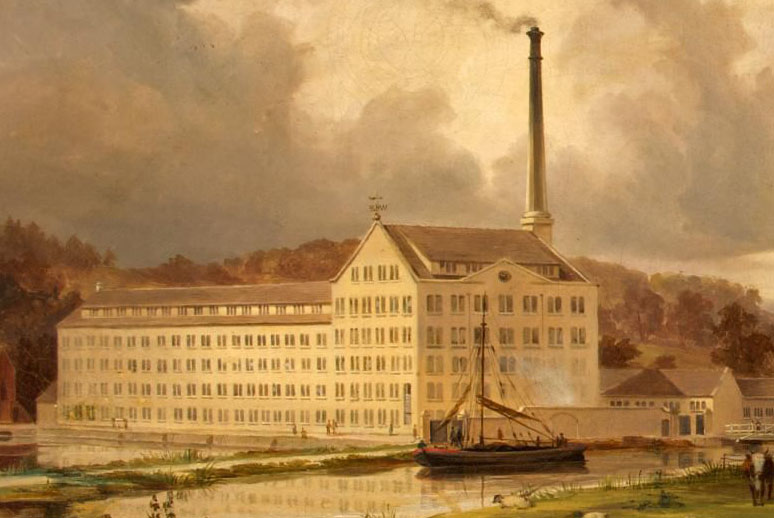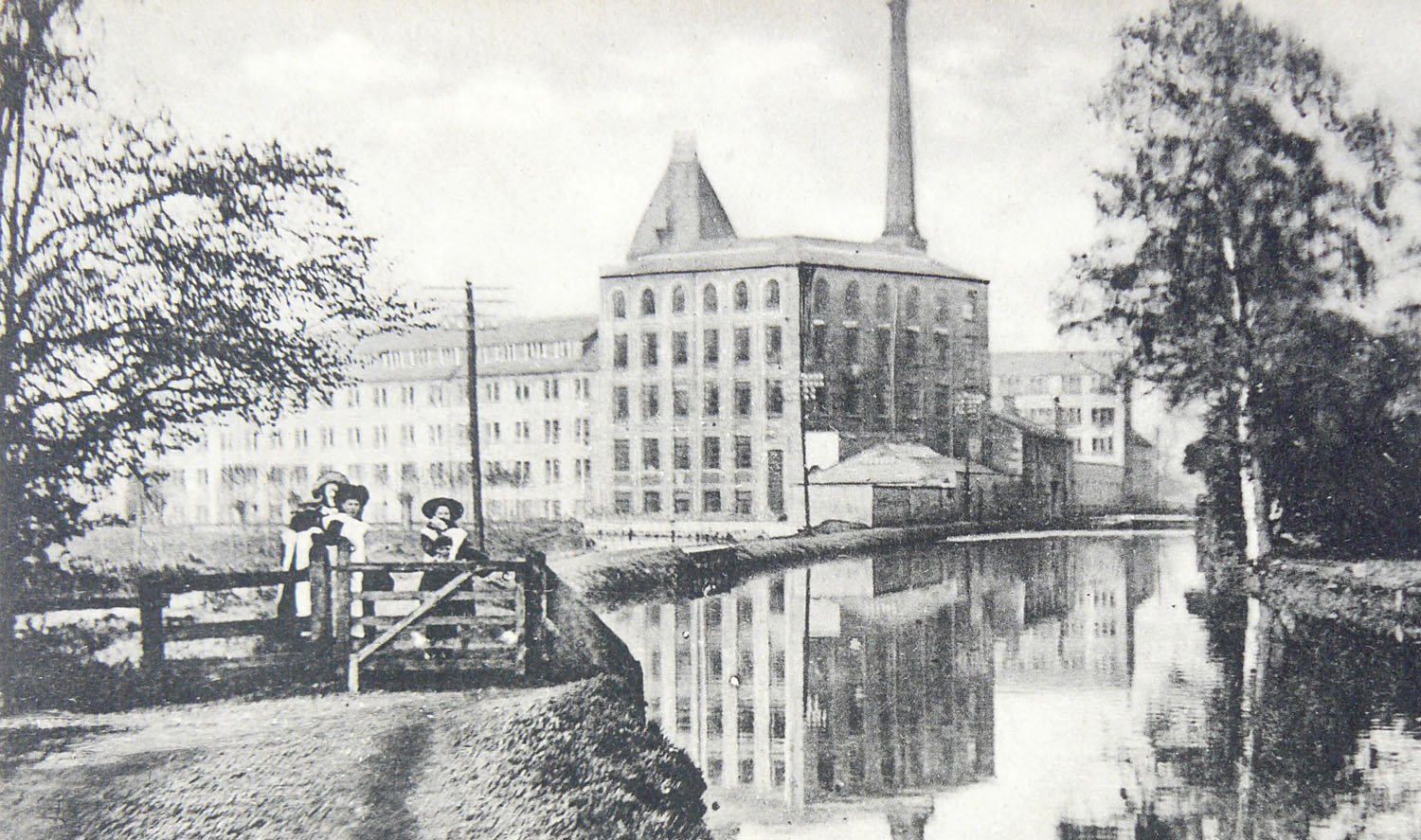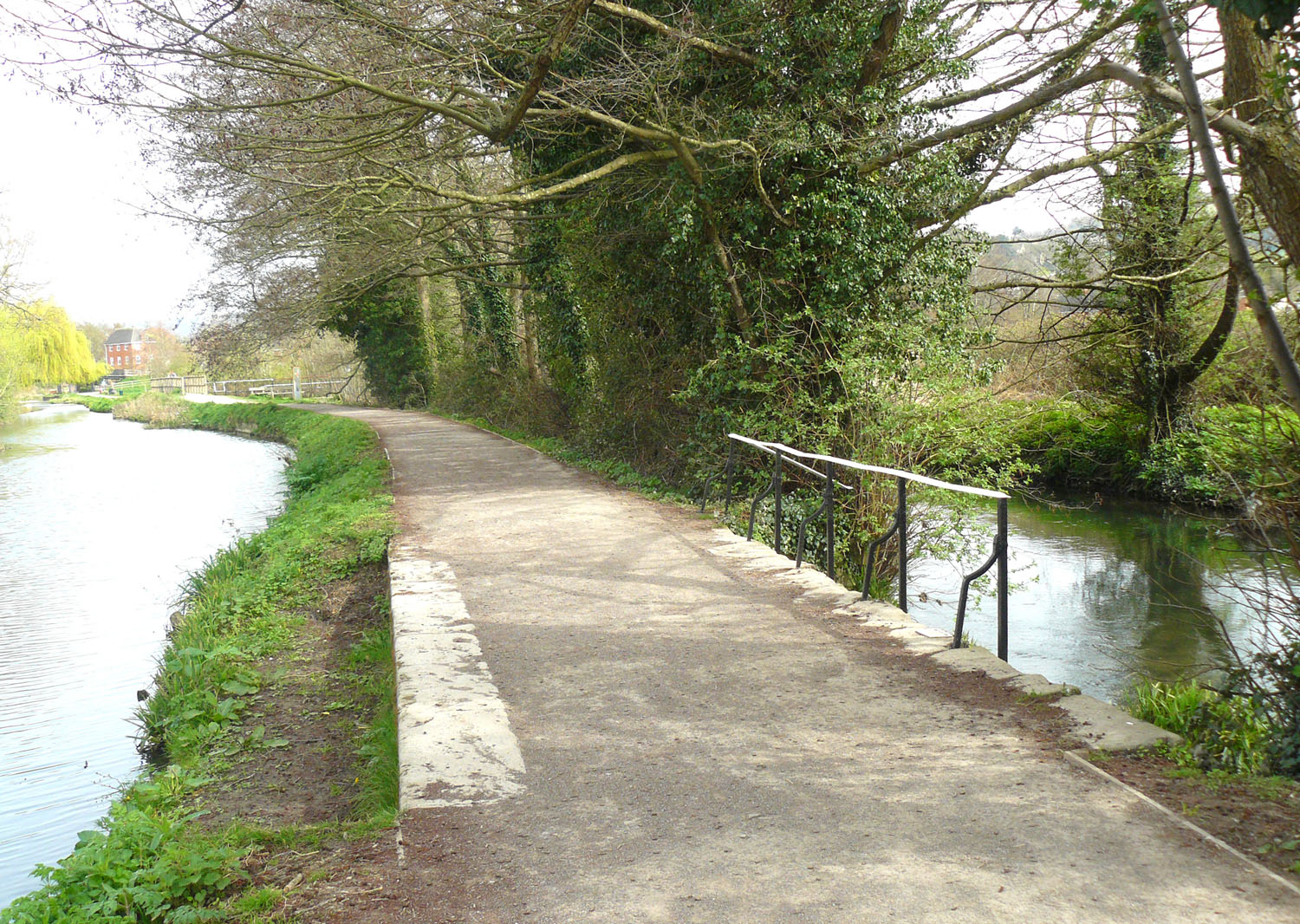

Ebley Mill was the largest woollen cloth mill in the Stroud valley, replacing an earlier mill on the north side of the canal. This painting shows the Long Block on the left, built c1820 and powered by four (later five) waterwheels in the basement that were fed by a huge pond.
The later block nearer the canal included a small steam engine to provide additional power. Access was via a swing bridge over the canal on the extreme right of the painting.
The mill was a major producer of fine woollen cloth, and it required a large fleet of barges working on the canal to bring coal to fuel the boilers.


Following a disatrous fire in 1859, the steam engine block near the canal was rebuilt to a design by architect G F Bodley, who also designed nearby Selsley Church.
The new building includes a staircase tower that once had a chiming clock. The chimes rang out every quarter of an hour, but one Sunday morning in 1885, the chiming did not stop! Some people were alarmed it was a most unlucky omen, but all agreed when it did stop after fifteen minutes, it was a great relief.
The mill continued to produce woollen cloth throughout most of the twentieth century, and coal continued to be delivered by canal until electric power was installed in the 1930s. The building is now the headquarters of Stroud District Council.


The weir that is now buried under the towpath (100 yards east of the Ebley Mill) was once a vital means of keeping the canal topped up with water. Every time a vessel passed through a lock, water was lost from the pound above, and it needed to be replaced.
During a working day, the river was usually lower than the canal, but at night and at weekends, a weir at the mill ensured that the level rose again, allowing water to flow into the canal for a time. For more about how water was shared between the needs of the canal and the needs of the mills, visit Water Management.
In the 1950s, the upper part of the canal was converted into a second river channel, and so now there is a narrow confluence weir to the east and a wide flood weir near the mill.
Basic story from Cathedral of Cloth by Ian Mackintosh.
Disatrous fire reported in Stroud Journal 24 Dec 1859.
Chiming clock reported in Stroud News 7 Aug 1885.